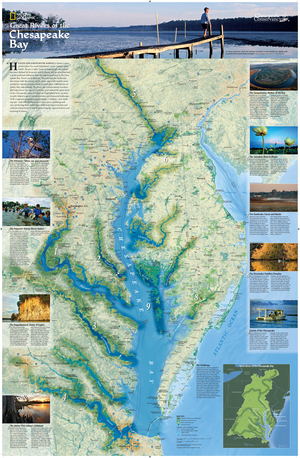Great Rivers of the Chesapeake
On a landscape as large as the Chesapeake Bay watershed, it can seem difficult to know where to start conservation, engagement, and education efforts, but the Chesapeake Conservancy has approached their work in the watershed by using its Great Rivers as a framework for conservation planning. This has resulted in a series of river corridor conservation initiatives that capitalize on the unique character and history of each river to find opportunities for conservation, education, and increased public access.
The Conservancy is currently engaged in projects along several of the Chesapeake’s Great Rivers: the James River in Virginia; the Susquehanna River, which flows through New York, Pennsylvania, and Maryland; the Nanticoke River in Delaware and Maryland; the Chester River in Maryland; and the Rappahannock River in Virginia These projects take different forms, but each seeks to create a vision for the future of the river through public engagement that will guide conservation, education, and public access work throughout the corridor.
In addition, as the primary partner with the National Park Service implementing the Captain John Smith Chesapeake National Historic Trail, the Chesapeake Conservancy is helping to lead segment planning efforts on the lower James River and the tidal Potomac River. Due to the enormous size of the Chesapeake Trail, the Trail is being developed and managed in segments. Each segment plan will address a five-year timeframe and will be developed in collaboration with local partners.
Take a trip down the Great Rivers on your computer or mobile device with the Chesapeake Conservancy’s Chesapeake Trail Virtual Tours.
